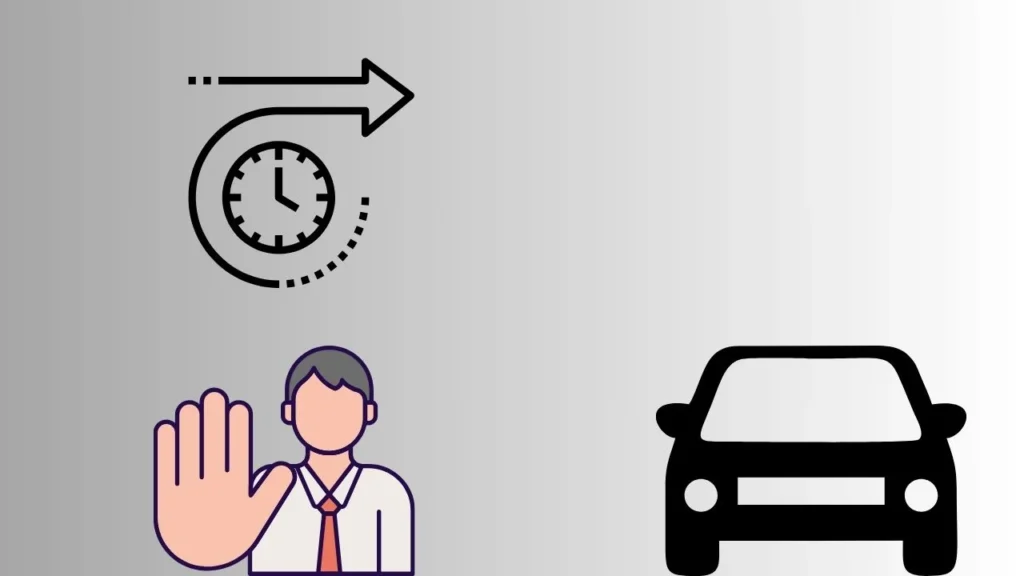Hello bro, ever been stuck in a parking lot, turning the key over and over, but your Car Only Starts When Jumped But Battery Is Good? You finally get it running with a jump, but the next morning boom, same problem again.
Frustrating, right? It makes no sense because the battery isn’t dead, yet your car refuses to start. Most of the time, it’s a loose connection, a weak alternator, or something simple.
Before you get stranded again, check out this detailed comparison of NOCO Boost GB70 vs. GBX75 to ensure you have the right jump starter for unexpected situations!
Quick Look
If your car only starts when jumped but the battery is good, the problem could be loose battery cables, a weak alternator, or a failing starter. Checking the battery terminals, fuses, and voltage levels can help identify the issue before it gets worse.
Fixing it early can prevent you from getting stranded, and if basic troubleshooting doesn’t work, it’s best to get a mechanic to take a closer look. To stay prepared for such situations, consider using a fast and safe car battery charger jump starter that ensures your vehicle always has the power it needs.
Common Causes of This Issue
Alright, buddy, let’s break it down. If your car won’t start without a jump, but the battery is still good, there’s something else messing things up. Here are the five most common reasons why this happens and how having the right jump starter can make all the difference.
1. Loose or Corroded Battery Connections

Your battery might be fine, but if the cables are loose or covered in corrosion, the power isn’t flowing properly. Even a small gap in connection can stop the car from starting. If your car needs a jump start every time, check your battery terminals if they look dirty or white, that’s corrosion, and you need to clean them up.
Tighten the clamps while you’re at it, and you might not even need a jump next time. Also, choosing the right jump starter matters learn the key differences between lead-acid and lithium-ion jump starters to ensure you have the best option for your needs.
2. Bad Alternator

Your alternator’s job is to charge the battery while you drive. If it’s failing, your battery isn’t getting the power it needs. One easy way to check? Jump-start your car and drive for 15 minutes then turn it off and try to restart. If it doesn’t start, your alternator isn’t charging the battery. You can also test it with a voltmeter; a healthy alternator should read between 13.5V and 14.5V while the engine is running.
3. Faulty Starter Motor

If you hear a clicking sound when turning the key, but the engine doesn’t crank, your starter could be bad. The starter is what gets the engine moving, and when it wears out, your battery can’t do anything about it. One trick to test this: turn on your headlights and try starting the car.
If the lights don’t dim at all, the starter is likely the problem. In cases like these, having a reliable jump starter can make a huge difference check out this comparison of TOPDON vs. NOCO jump starters to see which one suits your needs best.
4. Worn Ignition Switch

The ignition switch sends power to the fuel system and starter. If it’s worn out, your car might start and then suddenly shut off or not start at all. Try this: wiggle the key in the ignition while turning it if your dashboard lights flicker or the car suddenly starts, the ignition switch is likely bad.
5. Blown Fuse or Relay Issues

Your car has a fuse box that protects important electrical components, including the starter and fuel pump. If a fuse blows, your battery holds charge but the car won’t start, even if the battery is fine. Check your owner’s manual to locate the starter or ignition fuse and see if it looks burned or broken. Replacing a fuse costs only a few dollars and could get your car running again.
How to Diagnose the Problem

1. Check Battery Cables (2-Minute Check)
Loose or corroded cables can block power. Open the hood and inspect the battery terminals. If you see white or green buildup, that’s corrosion. Clean it with baking soda and water.
Wiggle the cables if they move, tighten them with a wrench. To stay prepared for battery issues and more, consider a 4-in-1 jump starter with an air compressor for added convenience on the road.
2. Test the Alternator (5-Minute Test)
If your battery isn’t holding a charge, the alternator might be weak. Here’s how to check:
- Start the car with a jump.
- Leave it running for 15 minutes with no extra load.
- Turn it off and try to restart.
If the car won’t start again, the alternator isn’t charging properly. Use a voltmeter a healthy alternator should show 13.5V to 14.5V while running. Anything lower means a failing alternator.
3. Listen for Clicking Sounds
Turn the key and listen. A single loud click usually means a faulty starter. Rapid clicking suggests weak battery connections. No sound at all? Check the ignition switch or fuses.
4. Inspect Fuses & Relays (3-Minute Fix)
Find the fuse box under the hood or inside the dashboard. Look for burned or broken fuses. Swap any faulty ones with a new fuse of the same rating they cost just a few dollars.
Quick Fixes & When to Seek Help

If your car only starts when jumped, something is wrong. If your car cranks but won’t start, here are four things you can check to fix the issue before heading to a mechanic.
1. Tighten Battery Connections
Loose or corroded battery cables can stop power from flowing properly.
- Open the hood and check if the battery terminals are loose.
- If they move, tighten them with a wrench.
- Look for corrosion (white or green buildup). If you see any, clean it with baking soda and water.
2. Jump-Start & Drive for 15 Minutes
If your alternator is failing, your battery won’t charge properly. Here’s how to check:
- Jump-start the car and drive for 15-20 minutes.
- Turn the car off and try restarting it without a jump.
- If it doesn’t start, the alternator might not be charging the battery.
- Use a voltmeter while running, the battery should read 13.5 to 14.5 volts. Anything lower means the alternator is bad.
3. Check the Starter or Ignition Switch
A faulty starter or ignition switch can prevent your car from starting.
- A single loud click means the starter isn’t getting enough power.
- Rapid clicking means the starter is trying to work, but something is wrong.
- If the dashboard lights flicker when turning the key, the ignition switch may be failing.
4. When to Visit a Mechanic
If the problem continues, get a professional diagnosis. You need a mechanic if:
- Your battery is good but still needs frequent jumps.
- The alternator is not charging above 13 volts.
- The starter clicks but won’t turn the engine.
- The ignition switch was replaced, but the issue remains.
Prevent Future Starting Problems

Hey bro, let’s keep it real no one wants to deal with a car that refuses to start. The good news? You can prevent this from happening again with a few simple habits. Here’s how to make sure your car starts every time, without needing a jump.
1. Check Your Battery & Alternator Every 3-6 Months
Your battery and alternator work together to keep your car running. If either one is weak, your car might struggle to start. Get your battery tested every 3-6 months to make sure it’s holding a charge. A healthy battery should read 12.6 volts when the car is off and 13.7-14.7 volts when running.
2. Clean Battery Terminals Every 6 Months
Corrosion on battery terminals can block power flow. Every 6 months, check for white or greenish buildup on the terminals. If you see any, clean it off with baking soda and water or a battery cleaning brush. This small step can prevent weak connections that make your car hard to start.
3. Pay Attention to Slow Cranking & Clicking Sounds
Your car gives you early warning signs before things get worse. If the engine cranks slower than usual or you hear clicking sounds when turning the key, your starter motor or battery could be weakening. Fixing the issue early will keep you from getting stranded.
4. Watch for Dashboard Warnings & Dimming Lights
If your battery light or check engine light appears, don’t ignore it. Also, pay attention if your headlights dim or your dashboard lights flicker these can be signs of an alternator problem. A weak alternator can drain a healthy battery in just a few days if not fixed.
5. Replace Old Batteries Before They Die
Car batteries last about 3-5 years. If yours is older than 4 years, it’s best to replace it before it fails. A weak battery might still work but can leave you stranded when you least expect it.
Key Takeaways:
- If your car only starts when jumped, the most common causes are loose battery connections, a bad alternator, or a faulty starter.
- A healthy battery should hold 12.6V when off and around 14V when running anything lower could mean alternator trouble.
- Ignoring early signs like clicking noises, dim lights, or slow cranking can lead to costly repairs down the road.
Conclusion
No second chances your car should start on its own. If it only fires up with a jump, something’s off. Loose battery cables, a weak alternator, or a failing starter motor could be the real issue. Watch for starter motor failure symptoms like clicking noises or slow cranking when turning the key.
Instead of guessing, spend 10 minutes checking the battery, terminals, and fuses. A healthy car cranks up without drama if yours doesn’t, don’t wait for the problem to get worse. One day, it might not start at all. Handle it now, avoid the hassle later. If the quick fixes don’t work, get a pro to take a look. Stay ahead, stay moving!
FAQs
Q1. Why does my car only start when jumped but the battery is good?
If your car needs a jump to start but the battery checks out fine, loose battery cables, a weak alternator, or a bad starter could be the issue. Corrosion on battery terminals or a blown fuse might also be messing with the power flow. Checking these first can save you from unnecessary headaches.
Q2. How do I know if my alternator is bad?
A bad alternator won’t charge your battery properly. Signs include dim headlights, flickering dashboard lights, or your battery draining fast even after driving. Use a voltmeter if the battery reads below 13.5V while the engine is running, your alternator might be failing.
Q3. Can a bad starter cause my car to need a jump?
Yes bro, if your starter is weak or failing, it may struggle to turn the engine over. If you hear a single loud click or rapid clicking when you turn the key, your starter might be dying. A jump might temporarily help, but it won’t fix the real issue.
Q4. What should I check first if my car won’t start without a jump?
Start with the simple stuff: battery terminals, cable connections, and corrosion. Then, check if the alternator is charging properly. If those look good, test the starter and fuses. Taking 10 minutes to check these can save you a lot of trouble later.




